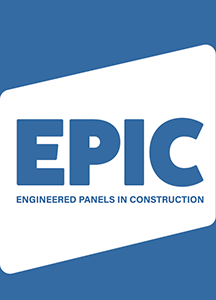What is ‘end of life’ for construction waste?
The treatment and disposal of construction waste has grown in emphasis over recent years due to European and other legislation and the concerns regarding the limited availability of landfill sites. We take this issue very seriously and the manufacturers within EPIC have conducted extensive research and trials to identify all the potential ‘end of life’ options that are practical, feasible and economic.
This section summarises the latest position concerning insulated panels that are entering the waste stream or are at the end of their life and covers the available options for end-of-life disposal.
The information has been gathered into EPIC’s updated end-of-life guide: ‘Identification and Disposal of Insulated Panels used in Buildings’.
Where are insulated panels used?
The ‘working with insulated panels’ section illustrates the wide range of uses of insulated panels in both external and internal applications, including specialist activities such as cold stores. Panels with polyisocyanurate (PIR)/polyurethane (PUR) insulation dominate the external roof and wall market and are increasingly used internally. Expanded polystyrene (EPS) and extruded polystyrene (XPS) cored panels are predominantly used internally. Mineral wool (MW) insulated panels have been used on external walls and also internally.
Recycling of the insulation core from all types of metal cladding systems is problematic and economic solutions are still being sought. Research has concluded that current demolition practice generally results in the insulation going to landfill – whether it is PUR, PIR, EPS, XPS or MW.
Identification and testing of panels
The three steps on panel identification and various tips are set out in the EPIC end of life guide. It summarises the various options for the reuse of insulated panels (from an economic and technical point of view) and has a separate section on the treatment, recycling and disposal of panels both with ODS and non-ODS blowing agents.
Reference is made to pentane – a non-ODS blowing agent used increasingly since 2000. In cases where it is not clear whether the blowing agent was an ODS gas, small samples can be sent to laboratories for analysis. The market situation regarding the various shredder and recycling plants is dependant on capacities and prices of recyclable materials and is constantly changing.
Download the free End of Life guide (updated 2022) above or read more about Maximising Benefits of Building Materials at End of Life.

